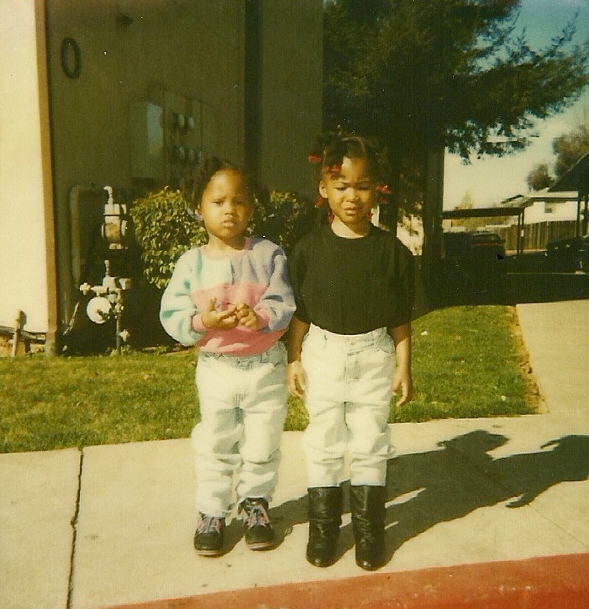CBT: It’s Not About Lying to Yourself—It’s About Setting Yourself Free
Let’s be real for a second: Sometimes CBT gets a bad rep.
You tell someone you're working on reframing your thoughts, and suddenly they hit you with, "So you're just trying to positive-think your trauma away?"
No. That’s not what this is.
CBT is not about gaslighting yourself into feeling okay when things are not okay.
It’s not about pretending your pain doesn’t exist or throwing glitter on a dumpster fire.
It’s about pulling your brain out of a mental chokehold, so you don’t end up sitting in suffering when there are other ways to see, feel, and move through the world.
So let’s talk about it.
The CBT Triangle
Let me introduce you to the real love triangle running your life—the CBT triangle:
Thoughts (Cognition) ↔ Feelings (Affect) ↔ Behaviors (Actions)
They’re all connected. You change one, you shake the whole triangle.
Example:
Situation: Someone ghosts you after three great dates.Thought: I must’ve done something wrong.
Feeling: Rejected, ashamed.
Behavior: You spiral. You delete Hinge. You cancel your plans. You text your toxic ex “Hey stranger.”
Now same situation, new thought:
Thought: Ghosting says more about them than me.
Feeling: Disappointed, but not destroyed.
Behavior: You tell your group chat, “His loss,” then go live your damn life.
Different thought → different feeling → different behavior.
And the situation didn’t even change.
Thoughts Run the Show (Even When We Don’t Notice)
Most of us think we feel things because of what’s happening around us.
Got cut off in traffic → Angry
Didn’t get the job → Sad
Someone compliments you → Happy
But slow that down.
If two people get cut off in traffic, one flips out and the other shrugs—what changed?
The thought changed.
"That jerk doesn’t care about anyone but themselves!" = Road rage
"Maybe they’re rushing to the hospital." = Mild curiosity
Same situation. Different thoughts. Totally different emotional outcome.
Automatic Thoughts: The Uninvited Background Narrator
Here’s the plot twist: Most of our thoughts aren’t conscious.
They’re automatic. Like mental pop-up ads. You didn’t ask for them, they just show up.
And if you’ve been through trauma, systemic oppression, or years of people projecting their insecurities onto you?
Yeah… those automatic thoughts aren’t always the kindest.
Text your friend, they don’t respond for 6 hours:
“They’re mad at me.”
“I’m annoying.”
“People always leave.”
That’s not your intuition—it’s your nervous system playing reruns.
Irrational Thoughts: When Your Brain Starts Making Stuff Up
The brain loves filling in blanks. Problem is, it fills them with guesses, not facts.Your friend doesn’t text back?
Your brain takes you on a whole Netflix series of assumptions:
Episode 1: “They’re ignoring me.”
Episode 2: “I said something wrong.”
Season Finale: “No one actually likes me.”
All without a single receipt.
These are irrational thoughts. And if you think them often enough? They become your default settings.
CBT says: Let’s check the facts before we spiral.
CBT in Action: Rewiring the Triangle
Let’s say you walk into a party and someone scowls in your direction.
Your default (automatic) thought might be:
“They don’t like me.” → Feel insecure → Leave early
CBT helps you slow it down and challenge that:
New Thought Options:
“Maybe they’re just having a bad day.”
“That wasn’t even about me.”
“I’m likable—even if they don’t vibe with me.”
New Outcome: You stay. You talk to someone new. You dance to Beyoncé. You don’t let one facial expression ruin your night.
This isn’t about pretending things are fine when they’re not.
It’s about broadening your lens so you're not trapped in a 3x5 mental cell.
CBT ≠ Gaslighting Yourself
Let’s say it louder for the people in the back:
CBT is not about “just thinking positive.”
You are not faking it.
You are not ignoring real issues.
You are not blaming yourself for having feelings.
CBT is about awareness + choice.
Noticing your thoughts.
Asking if they’re true.
Choosing ones that actually help you live.
Final Thoughts: You’re Not Broken—Your Thoughts Just Need a Tune-Up
If your thoughts were a playlist, CBT helps you skip the tracks that keep you stuck in sadness, fear, and self-doubt—and choose something that actually slaps.
You can still feel the feels.You can still hold people accountable.
You can still be a whole, raw, complex human being.
But now? You’ve got a skill to help you sit with your pain without drowning in it.
And that right there? That’s healing.
Want to try it out?
Start with this:
Next time you feel something intense—pause.
Ask yourself:
What am I thinking right now?
Is that thought true?
Is it helpful?
Is there another way to look at this?
Let’s not pretend this is easy. But over time? It changes everything.
You deserve to feel better. Not because you're forcing it—but because you're freeing yourself from old lies.
Need help working through it? Therapy is a great place to start. Especially the kind where we check the receipts on your thoughts. I know a therapist or two 😉










Comments
Post a Comment